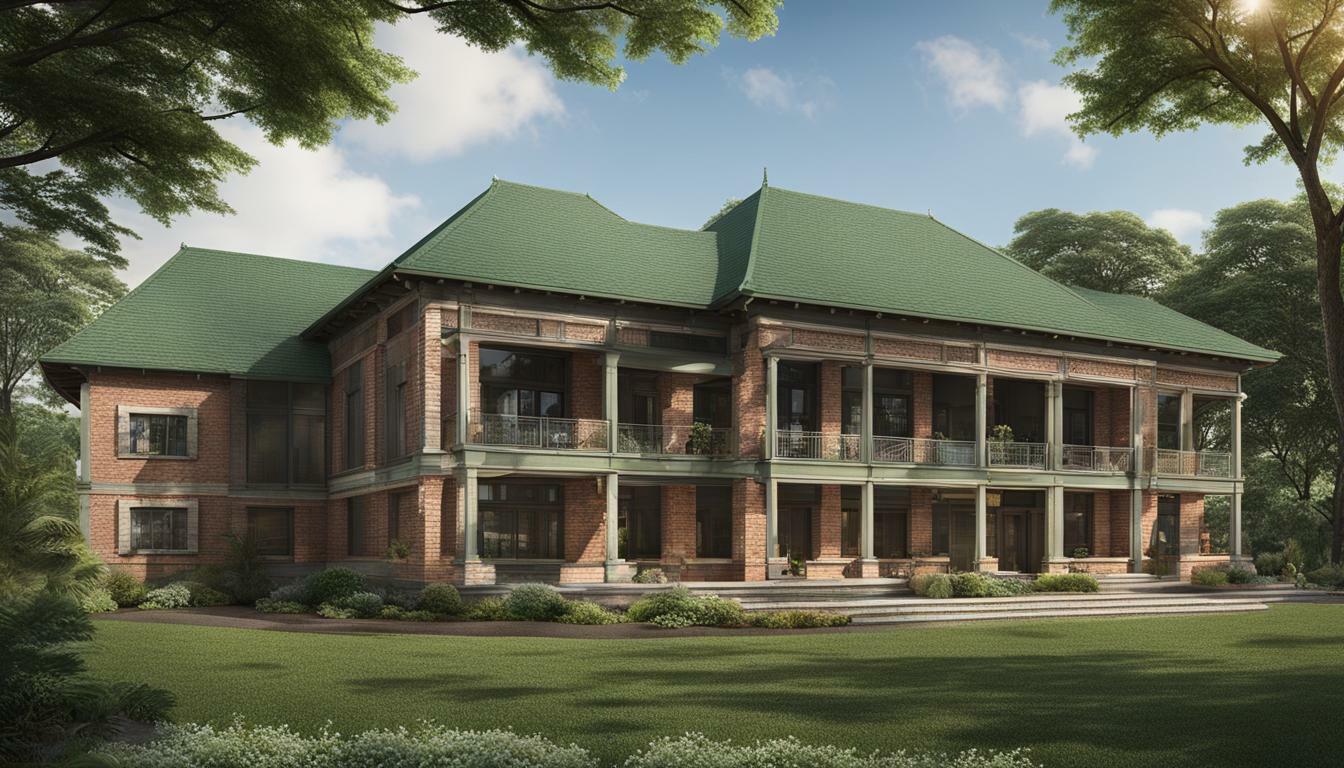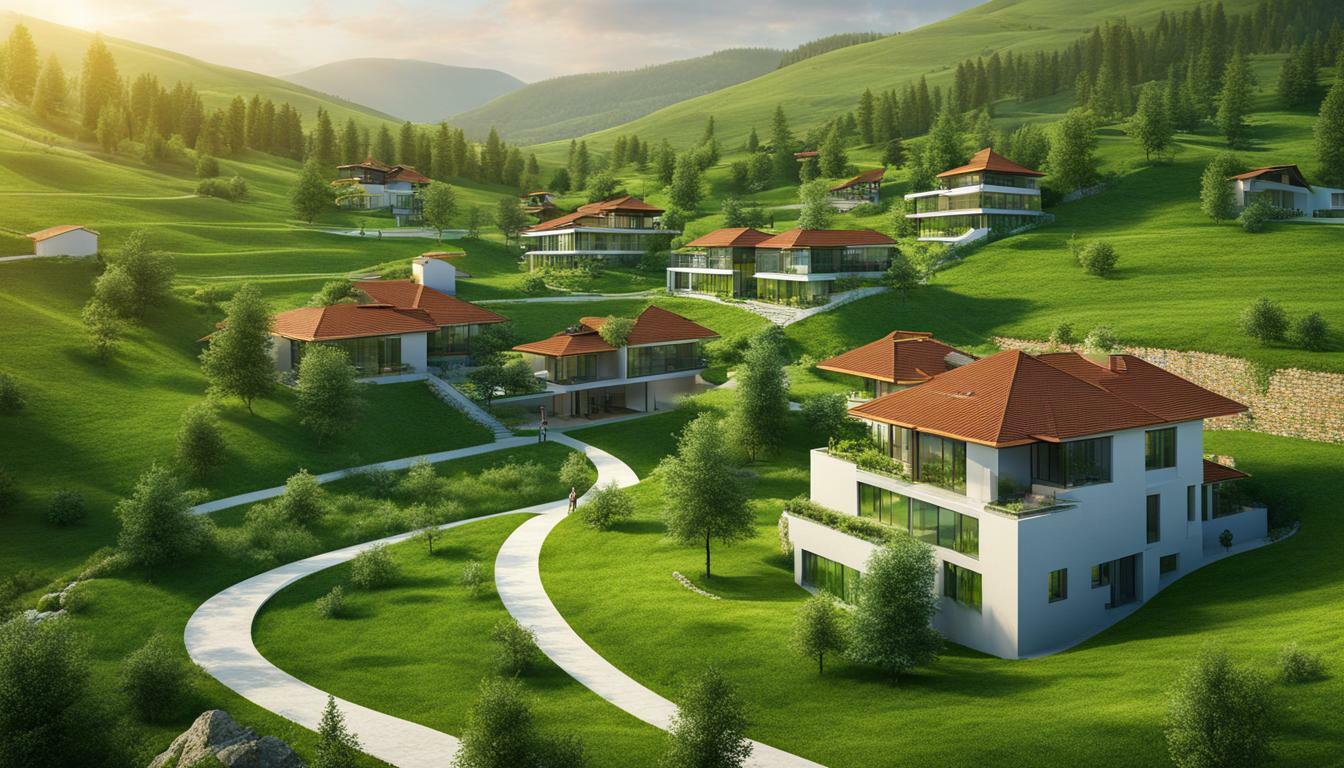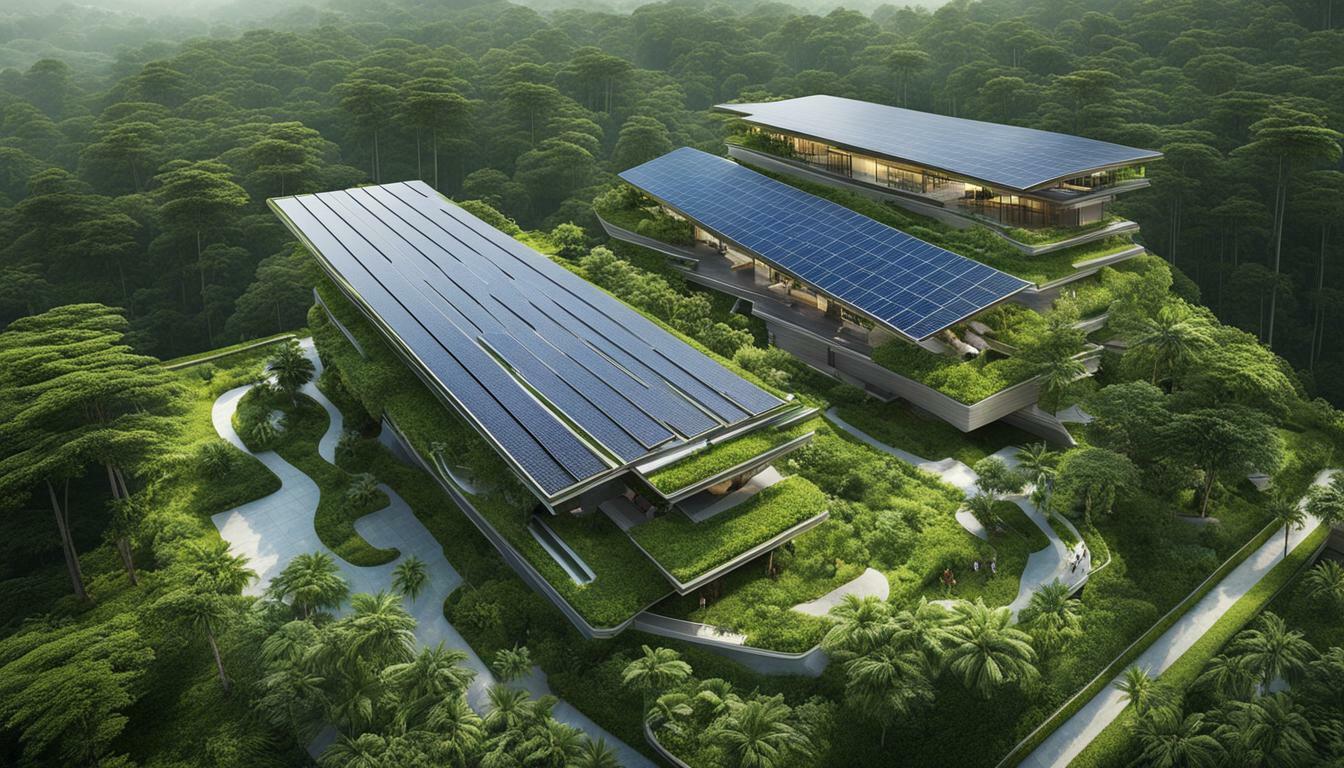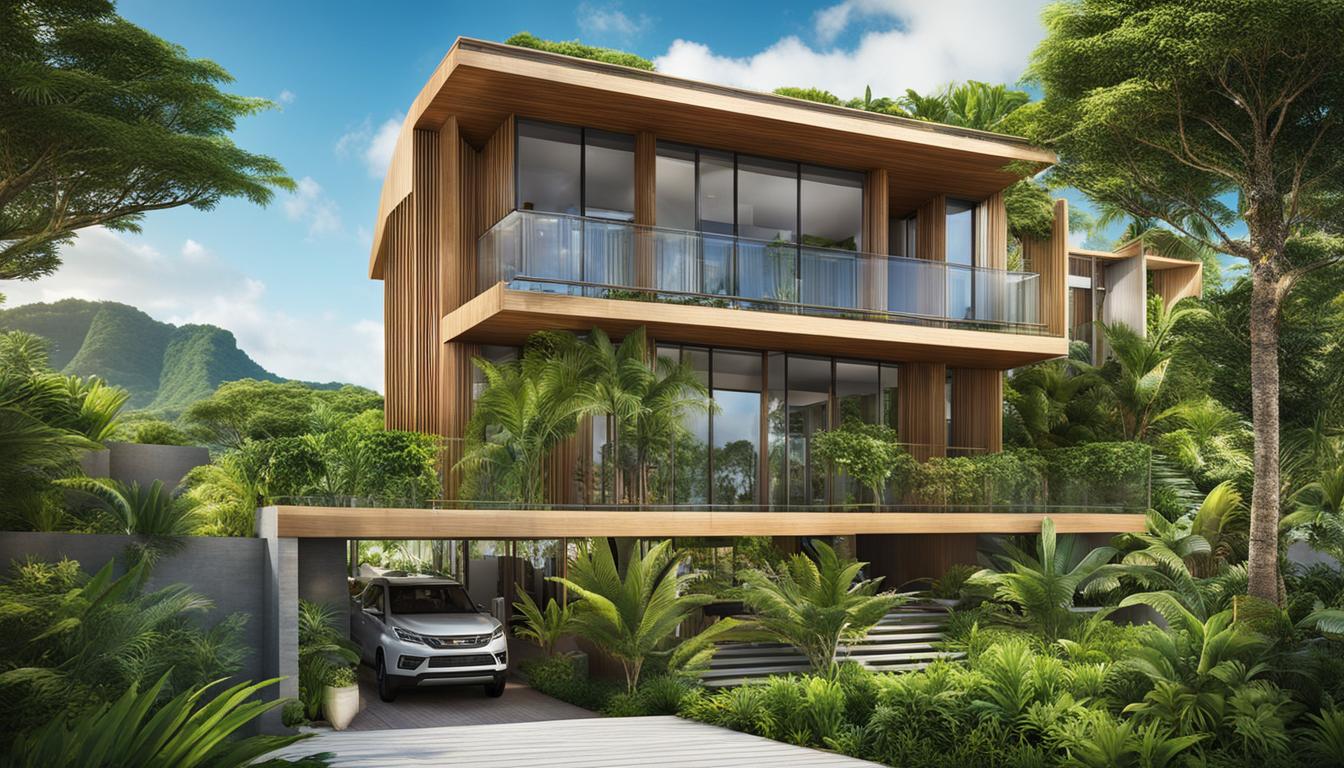Greece Green Building History
Greece has experienced a notable transformation in its approach to construction, embracing sustainability and eco-friendly practices in recent years. The economic recession in the country provided an opportunity for the real estate sector to prioritise sustainability, leading to a significant shift towards green buildings. In 2008, Greece achieved a milestone with its first LEED project, marking the beginning of a new era for the industry. Since then, the demand for sustainable construction has been on the rise, aligning with global trends and the growing awareness of the importance of environmental responsibility.
- Greece’s construction industry has embraced sustainability, prioritising eco-friendly practices.
- The economic recession provided an opportunity for the real estate sector to focus on green buildings.
- The first LEED project in Greece, completed in 2008, set a milestone for the industry.
- There is a growing demand for sustainable construction in Greece, considering economic, social, and environmental factors.
- Ancient Greek architecture continues to influence modern sustainable designs in the country.
With a combination of traditional architectural styles and modern sustainable designs, Greece is striving to minimise carbon emissions and make a positive impact on the environment. The country’s commitment to sustainable development and eco-friendly architecture is reflected in the increasing use of innovative and environmentally friendly materials in construction projects. Greece’s journey towards a greener future is driven by a desire to create buildings that not only enhance the quality of life but also contribute to a more sustainable and resilient society.
The Rise of Sustainable Construction in Greece
In response to the economic recession, Greece’s real estate sector underwent a significant shift towards sustainable construction and embraced green building practices. This transition was driven by the need to prioritize sustainability and find innovative solutions to rebuild the industry. Today, sustainable development in Greece has become a key focus, with green building practices and sustainable urban planning taking center stage.
One of the key factors contributing to the rise of sustainable construction in Greece was the realization that sustainable practices not only benefit the environment but also provide economic advantages. Energy-efficient buildings have lower operating costs, reducing the burden on homeowners and businesses. Additionally, the use of sustainable building materials has gained traction, promoting the circular economy and minimizing the carbon footprint of construction projects.
Greece has also embraced sustainable urban planning as a means to create healthier and more livable cities. This includes the implementation of green spaces, pedestrian-friendly infrastructure, and efficient public transportation systems. By prioritizing sustainable urban planning, Greece aims to improve the quality of life for its residents while minimizing the environmental impact of urbanization.
The Importance of Collaboration
Collaboration between government entities, architects, developers, and the public has been crucial in driving sustainable construction in Greece. Through partnerships and dialogue, stakeholders have been able to share knowledge, resources, and best practices. This collaborative approach has fostered innovation and facilitated the adoption of sustainable building practices throughout the country.
The rise of sustainable construction in Greece is a testament to the country’s commitment to building a greener future. With a focus on sustainable development, green building practices, and sustainable urban planning, Greece is paving the way for a more environmentally conscious and socially responsible construction industry.
| Benefits of Sustainable Construction in Greece | Examples of Sustainable Building Practices |
|---|---|
| – Lower energy costs | – Use of renewable energy sources |
| – Reduced carbon footprint | – Rainwater harvesting |
| – Improved indoor air quality | – Green roofs and vertical gardens |
| – Creation of green jobs | – Efficient insulation and glazing |
| – Enhanced resilience to natural disasters | – Waste reduction and recycling |

Innovations in Eco-Friendly Architecture
Greece has witnessed a surge in environmentally friendly design, as architects and organizations strive to create sustainable buildings that blend seamlessly with the environment. From utilizing renewable energy sources to incorporating natural elements in their designs, these innovators are reshaping the future of architecture in Greece.
One notable example is Estia Developments, a leading construction company that is committed to sustainable architecture. They have embraced eco-friendly materials and techniques in their projects, resulting in energy-efficient buildings that minimize the environmental impact. Their designs seamlessly blend modern aesthetics with the natural surroundings, creating harmonious spaces that promote well-being.
Eco-Friendly Materials
The use of eco-friendly materials is a key focus in Greece’s green building initiatives. Architects and developers are exploring sustainable alternatives to traditional construction materials, such as recycled steel, reclaimed wood, and low VOC paints. These materials not only reduce waste and carbon emissions but also contribute to healthier indoor environments.
Moreover, biomimicry is gaining traction in Greek architecture, where designers draw inspiration from nature to create innovative solutions. This approach involves studying natural patterns, forms, and processes and applying them to building design. By mimicking nature’s efficiency, architects can create structures that are energy-efficient and in harmony with their surroundings.
| Eco-Friendly Materials | Advantages |
|---|---|
| Recycled steel | Durable and reduces the demand for new steel production |
| Reclaimed wood | Sustainable alternative to new timber, reduces deforestation |
| Low VOC paints | Improves indoor air quality and reduces harmful emissions |
These innovations in eco-friendly architecture are not only benefiting Greece’s environment but also creating sustainable and inspiring spaces for its residents. By prioritizing sustainability as a core principle, Greece is paving the way for a greener future in the construction industry.

Energy-Efficient Buildings in Greece
Energy-efficient buildings have become a priority in Greece, with a strong focus on sustainable building materials and energy conservation. The country’s commitment to reducing carbon emissions and promoting environmentally friendly practices has led to significant advancements in the construction industry. Greece is now embracing innovative approaches to create buildings that not only minimize energy consumption but also contribute to a sustainable future.
Incorporating sustainable building materials is a key aspect of Greece’s green building movement. The use of eco-friendly materials such as recycled concrete, bamboo, and reclaimed wood has gained popularity among architects and developers. These materials not only reduce the carbon footprint of buildings but also provide a healthier indoor environment for occupants.
Furthermore, energy-efficient designs and technologies are being implemented to maximize energy conservation. From solar panels and efficient insulation to smart lighting systems and rainwater harvesting, Greece is at the forefront of adopting sustainable technologies. This not only reduces energy consumption but also helps in saving costs for building owners in the long run.

Estia Developments, a leading construction company in Greece, is a prime example of incorporating sustainable practices. Their projects showcase the innovative use of sustainable building materials and energy-efficient technologies. By focusing on the triple bottom line value, which considers the economic, social, and environmental aspects, Greece is creating a positive impact on the environment while meeting the evolving demands of the real estate market.
| Benefits of Energy-Efficient Buildings in Greece |
|---|
| 1. Reduced carbon emissions 2. Lower energy costs for building owners 3. Improved indoor air quality 4. Contributing to a sustainable future |
In conclusion, Greece has made significant progress in the development of energy-efficient buildings. With a strong focus on sustainable building materials and energy conservation, the country is aligning itself with global sustainability goals and addressing the challenges posed by climate change. By incorporating environmentally friendly practices and innovative technologies, Greece is paving the way for a greener and more sustainable future.
Incorporating Sustainable Practices
Greece’s construction industry has embraced sustainable practices by adopting innovative materials and incorporating eco-friendly architectural principles into building designs. With a focus on minimizing carbon emissions and promoting a positive impact on the environment, the country has made significant strides in sustainable construction.
One example of incorporating sustainable practices is the use of environmentally friendly materials. Companies like Estia Developments have been at the forefront of this movement, using sustainable building materials in their projects. These materials not only reduce the carbon footprint but also contribute to the overall energy efficiency of the buildings.
Furthermore, eco-friendly architectural principles have been integrated into the design process. This includes the use of natural ventilation and lighting systems, which not only reduce energy consumption but also create a healthier and more comfortable living environment for occupants.
By combining traditional architectural styles with modern sustainable designs, Greece is paving the way for a greener future. The construction industry’s commitment to sustainable practices is evident in the increased demand for eco-friendly architecture in the country. As more projects prioritize sustainability, Greece is setting an example for other nations to follow in the pursuit of a more environmentally conscious built environment.

| Sustainable Building Materials | Benefits |
|---|---|
| Recycled Concrete | Reduces the need for new concrete production and lowers carbon emissions |
| Insulated Panels | Improve energy efficiency and reduce heating and cooling costs |
| Bamboo Flooring | A renewable resource that is durable and aesthetically pleasing |
| Solar Panels | Generate clean and renewable energy, reducing reliance on traditional power sources |
By incorporating sustainable practices and utilizing eco-friendly materials, Greece is making significant progress towards a more sustainable future. The construction industry’s dedication to these principles not only benefits the environment but also enhances the quality of life for residents in these buildings. As sustainability continues to take center stage in the construction industry, Greece’s commitment to green building is a testament to its vision for a greener and more sustainable future.
The Influence of Ancient Greek Architecture
Ancient Greek architecture serves as a timeless inspiration for modern architects in Greece, shaping sustainable development practices and promoting a harmonious coexistence with the environment. The principles of balance, proportion, and harmony that defined ancient Greek architecture continue to influence architectural designs today, particularly in the context of sustainable construction.
Architects in Greece draw inspiration from the iconic structures of ancient Greece, such as the Parthenon, to create sustainable buildings that integrate seamlessly with the natural surroundings. By incorporating the use of locally sourced, eco-friendly materials, architects are able to reduce the carbon footprint of their projects while paying homage to Greece’s architectural heritage.
“We believe that sustainable architecture should not only meet the needs of the present but also preserve the environment for future generations,” says Maria Katsarou, a renowned Greek architect. “By fusing ancient Greek architectural principles with modern sustainable design practices, we can create buildings that are not only aesthetically pleasing but also environmentally responsible.”
Estia Developments, a leading developer in Greece, is a prime example of a company that has embraced this approach. Their projects seamlessly merge ancient Greek architectural elements with contemporary sustainable design to create eco-friendly and visually striking buildings. From incorporating natural ventilation systems to utilizing solar energy, they prioritize energy efficiency and sustainable living.
With Greece’s rich architectural history as a foundation, the incorporation of sustainable practices into building design has become a driving force in the country’s construction industry. The influence of ancient Greek architecture can be seen in the use of eco-friendly materials, the incorporation of natural elements, and the focus on creating spaces that facilitate a symbiotic relationship between humans and the environment.

| Advantages of Incorporating Ancient Greek Architecture into Modern Sustainable Designs: |
|---|
| 1. Preservation of Greece’s architectural heritage while promoting sustainable development. |
| 2. Reduction of carbon emissions through the use of eco-friendly materials and energy-efficient systems. |
| 3. Creation of aesthetically pleasing buildings that seamlessly blend with the natural environment. |
| 4. Promotion of sustainable living and a harmonious coexistence with nature. |
Conclusion
Greece has successfully embraced sustainable construction practices, combining its architectural heritage with innovative designs to create environmentally friendly buildings and contribute to a greener future. The economic recession in the country provided an opportunity for the real estate sector to prioritize sustainability, leading to the completion of the first LEED project in 2008. Since then, the demand for green buildings has been on the rise, aligning with global trends and the emphasis on the triple bottom line value.
A key factor in Greece’s sustainable construction journey is the influence of ancient Greek architecture. The country’s rich architectural history continues to inspire modern architects, shaping sustainable development practices. Architects in Greece are implementing sustainable practices by using innovative and environmentally friendly materials in their designs. One notable example is Estia Developments, who have incorporated sustainable architecture into their projects.
By combining traditional architectural styles with modern sustainable designs, Greece is making significant efforts to minimize carbon emissions and have a positive impact on the environment. The country’s commitment to sustainable construction is evident in its ongoing efforts to create eco-friendly buildings and promote a greener future.
FAQ
When was the first LEED project completed in Greece?
The first LEED project in Greece was completed in 2008.
What has been the trend in the demand for green buildings in Greece?
The demand for green buildings in Greece has been rising exponentially, aligning with global trends.
What factors have influenced the rise of sustainable construction in Greece?
The economic recession in Greece provided an opportunity for the real estate sector to focus on sustainability.
How has Greece incorporated sustainable practices in construction?
Greece has implemented sustainable practices by using innovative and environmentally friendly materials.
Can you give an example of a company that has incorporated sustainable architecture in Greece?
Estia Developments is one company that has incorporated sustainable architecture into their projects in Greece.
What is the emphasis in Greece’s approach to sustainable construction?
Greece emphasizes the triple bottom line value, considering economic, social, and environmental factors.
How does ancient Greek architecture influence modern sustainable designs in Greece?
Greece’s rich architectural history, particularly ancient Greek architecture, continues to inspire modern architects and shape sustainable development practices in the country.








